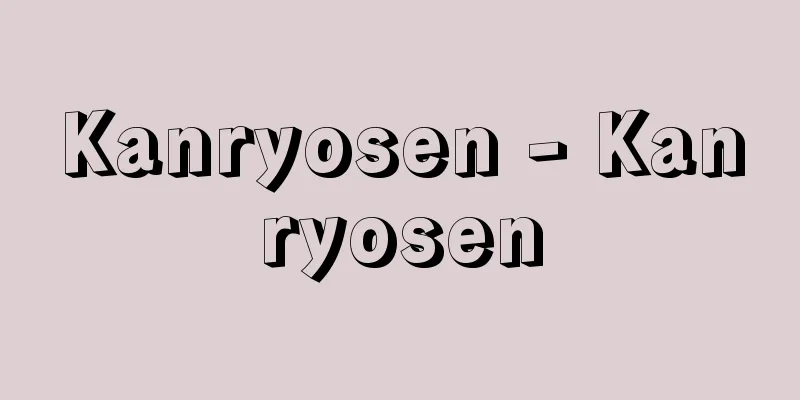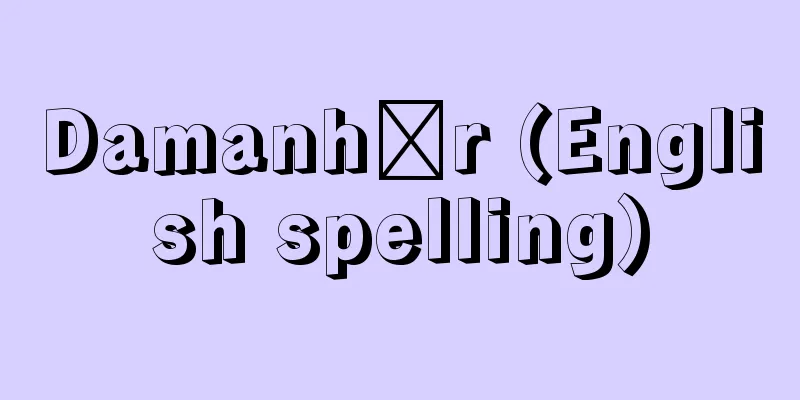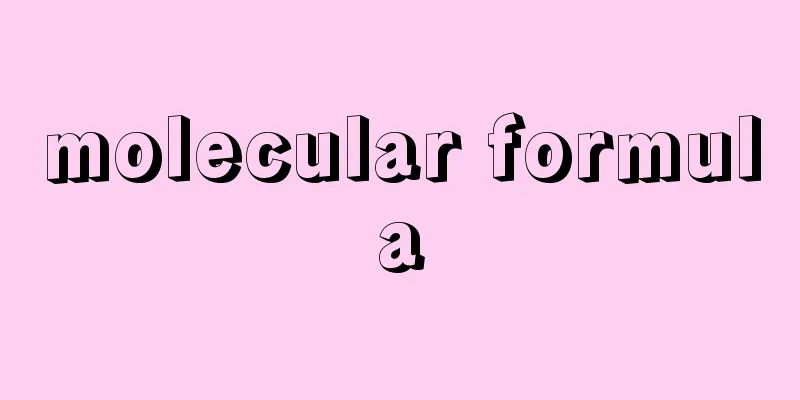Charging - juuden (English) charge

|
After current is extracted from a storage battery (also called a secondary battery) and discharged, a current is passed from an external power source in the opposite direction to that used during discharging to regenerate the storage battery active material and store energy. This is equivalent to converting electrical energy into chemical energy. A storage battery is a power source that stores direct current through repeated charging and discharging and can supply power to an external device as needed. When discharging, an oxidation reaction (anode reaction) occurs at the negative electrode and a reduction reaction (cathode reaction) occurs at the positive electrode. When charging, the opposite occurs, with a cathode reaction at the negative electrode and an anode reaction at the positive electrode. When discharging a lead-acid battery, a typical storage battery, (negative electrode) The actual discharge voltage is smaller than this electromotive force. On the other hand, since the above reaction must proceed in the reverse direction during charging, a voltage larger than this electromotive force is applied from an external power source to charge the battery. The polarization phenomenon from this equilibrium electromotive force occurs due to overvoltage caused by the delay in the electrode reaction between the two electrodes and the electrolyte, and ohmic loss caused by the delay in the movement of electrons and ions in the electrodes and electrolyte. In addition, the capacity decreases due to self-discharge, and water is electrolyzed as a side reaction during charging, generating hydrogen from the negative electrode and oxygen from the positive electrode, resulting in energy loss, and the amount of electricity used for charging cannot be fully utilized during discharge. In other words, the charging efficiency is not 100%. The ratio of the amount of charging electricity to the amount of discharge electricity is called the ampere-hour efficiency, and the ratio of the amount of power is called the watt-hour efficiency, and they are used to indicate the reversibility of the charging and discharging reactions of a storage battery. Generally, the ampere-hour efficiency of a lead-acid battery is about 55%, and the watt-hour efficiency is about 75%. There are various charging methods, such as constant current charging, stepwise charging, constant current/constant voltage charging, semi-constant voltage charging, floating charging, and trickle charging, and they are used according to the use and purpose of the storage battery. Stepwise charging is a type of constant current charging in which the charging current is gradually reduced as charging progresses. For example, in lead-acid batteries, the current is reduced when the charging voltage rises to 2.35-2.45 volts, at which point water begins to decompose. Float charging is a method in which the storage battery and rectifier (charger) are connected in parallel, and a constant voltage about 0.1 volts higher than the electromotive force is applied from the rectifier to compensate for the self-discharge of the storage battery in standby mode, while continuing to charge, supplying current to the load. In the event of a power outage, power can be supplied from the storage battery to the load without momentary interruption. It is used in stationary lead-acid batteries for power distribution equipment and communication equipment, and for starting automobiles. Trickle charging is a constant standby charging method in which a storage battery is constantly charged with a minute current while disconnected from the load to compensate for self-discharge, preparing for unexpected power outages, etc., and is used for starting emergency lighting devices and private power generation equipment. [Mitsuru Asano] Charging the capacitorCapacitors that store electric charge in a dielectric between electrodes were once called condensers, but are now called capacitors to distinguish them from condensers (condensers). When a DC voltage is applied to a capacitor that uses this type of dielectric, a current flows that instantaneously reaches a maximum and decays over time, storing an electric charge determined by the product of the capacitance of the capacitor and the applied voltage. When charging an electric double layer capacitor, the electric double layer capacitance that occurs at the electrode and electrolyte interface due to the physical adsorption of electrolyte ions to the activated carbon electrode is utilized. Since no chemical reaction is involved, there is almost no deterioration due to charge/discharge cycles. Metal oxide electrochemical capacitors using ultrafine particles of ruthenium oxide are charged by utilizing the pseudocapacitance caused by the adsorption of hydrogen ions from an aqueous sulfuric acid solution onto the ruthenium oxide electrode and the absorption of hydrogen into the electrode. Conductive polymer capacitors using electrodes such as polypyrrole utilize the fact that ions (dopants) are absorbed from the electrolyte side and charges are accumulated to compensate for the positive and negative charges generated by the redox (oxidation-reduction) activity of the electrodes. [Mitsuru Asano] "Electrochemistry" edited by Zenpachi Ogumi (2000, Ohmsha)" ▽ "Electrochemical Society, ed., "Electrochemistry Handbook" (2000, Maruzen)" ▽ "Battery Handbook" edited by the Battery Handbook Editorial Committee (2001, Maruzen)" [References] | | | | | |Source: Shogakukan Encyclopedia Nipponica About Encyclopedia Nipponica Information | Legend |
|
蓄電池(二次電池ともいう)より電流を取り出し放電した後、外部電源から放電のときとは逆方向に電流を流して蓄電池活物質を再生し、エネルギーを蓄えること。電気エネルギーを化学エネルギーに変換することに相当する。蓄電池は充電と放電の繰り返しにより直流電力を貯蔵し、必要に応じて外部に電力を供給することができる電源で、放電時に負極では酸化反応(アノード反応)、正極では還元反応(カソード反応)が進む。そして充電時にはこの逆に負極ではカソード反応、正極ではアノード反応が進む。代表的な蓄電池である鉛蓄電池では、放電すると 実際の放電電圧はこの起電力より小さくなる。一方、充電では上の反応を逆方向に進めなければならないので、外部電源からこの起電力より大きい電圧を印加(加えること)して充電される。この平衡起電力からの分極現象は、両極と電解液との間の電極反応の遅れより生じる過電圧、電極や電解質中の電子やイオンの動きの遅れより生じるオーム損により発生する。また自己放電により容量が低下したり、充電時の副反応として水が電解され、負極からは水素が、正極からは酸素が発生するためエネルギー損となり、充電に用いた電気量を放電ですべて利用することはできない。つまり充電効率は100%にはならない。この放電電気量に対する充電電気量の比率をアンペア時効率、また電力量の比率をワット時効率といい、蓄電池の充放電反応の可逆性を示すのに用いられる。一般に鉛蓄電池のアンペア時効率は約55%、ワット時効率は約75%である。 充電方法には定電流充電、段別充電、定電流定電圧充電、準定電圧充電、浮動充電(フロート充電)、トリクル充電などがあり、蓄電池の用途や目的に応じて使い分けられている。段別充電は定電流充電の一種で、充電の進行に伴い充電電流を段階的に減少させる方式である。たとえば鉛蓄電池では、充電電圧が水の分解が始まる2.35~2.45ボルトに上昇すると電流を下げていく方法がとられている。また浮動充電は蓄電池と整流器(充電器)を並列に接続し、通常待機状態にある蓄電池の自己放電を補うため、起電力より約0.1ボルト高い定電圧を整流器より印加して充電を続けながら、負荷に電流を供給する方式である。停電などの場合には無瞬断で蓄電池から負荷に電力を供給することができる。受配電設備や通信設備の据置き用および自動車起動用の鉛蓄電池などに採用されている。トリクル充電は自己放電を補うため、蓄電池を負荷から切り離した状態で絶えず微小電流で充電し、不意の停電などに備える常時待機形の充電方法で、非常用照明装置や自家発電設備の始動用などに利用されている。 [浅野 満] キャパシターへの充電電極間の誘電体に電荷を蓄積するキャパシターはかつてコンデンサーとよばれていたが、現在では凝縮器(コンデンサー)と区別するためキャパシターとよばれている。この誘電体を用いるキャパシターに直流電圧を印加すると、瞬間的に最大となり時間とともに減衰する電流が流れ、キャパシターの静電容量と印加電圧の積で決まる電荷が充電される。 電気二重層キャパシターの充電では、電解質イオンの活性炭素電極への物理吸着により電極と電解質界面に生じる電気二重層容量を利用している。化学反応を伴わないので充放電サイクルによる劣化はほとんどない。 超微粒子の酸化ルテニウムなどを用いる金属酸化物系電気化学キャパシターの充電では、硫酸水溶液からの水素イオンの酸化ルテニウム電極への吸着と電極内部への水素の吸収による疑似容量を利用している。またポリピロールなどの電極を用いる導電性高分子キャパシターでは、そのレドックス(酸化還元)活性により生じる正負電荷を補償するため、電解質側からイオン(ドーパント)が取り込まれて電荷が蓄積されることを利用している。 [浅野 満] 『小久見善八編著『電気化学』(2000・オーム社)』▽『電気化学会編『電気化学便覧』(2000・丸善)』▽『電池便覧編集委員会編『電池便覧』(2001・丸善)』 [参照項目] | | | | | |出典 小学館 日本大百科全書(ニッポニカ)日本大百科全書(ニッポニカ)について 情報 | 凡例 |
Recommend
Caspian tiger - Caspian tiger
...It is similar to the Sumatran tiger (P. t . su...
cherry elaeagnus
...Many flowers appear in the leaf axils around M...
Bioko [island] - Bioko
An island in Equatorial Guinea located in the Gulf...
Kalachakra Tantra
...The name began to appear in Tibetan Buddhist d...
garrison hospital - eijubyoin
〘 noun 〙 A hospital established in the former army...
modulus
...Mathematical term. [Congruence of integers] Wh...
Kanto Public Affairs
Also called Kanto Mikuuji or Kanto Onkuji. Duties ...
Orbital Pad - Kid Pad
… In the case of wooden sleepers, nails (named af...
Special committee
…Diet National Diet [Yoichi Higuchi]. . *Some of ...
Yoshishige Abe
Philosopher and educator. Born in Matsuyama, Ehim...
Kasuga Jodo Mandala
...The above is the basic form, but in the late K...
Obraztsov, VN - Obraztsov
…Soviet puppet theater director, actor, and write...
Ginkakeya - Ginkakeya
〘noun〙 During the Edo period, a merchant who was i...
Social bandit
…A bandit is someone who is considered a criminal...
Agni - Agni (English spelling)
The ancient Indian god of fire. Characterized as ...









